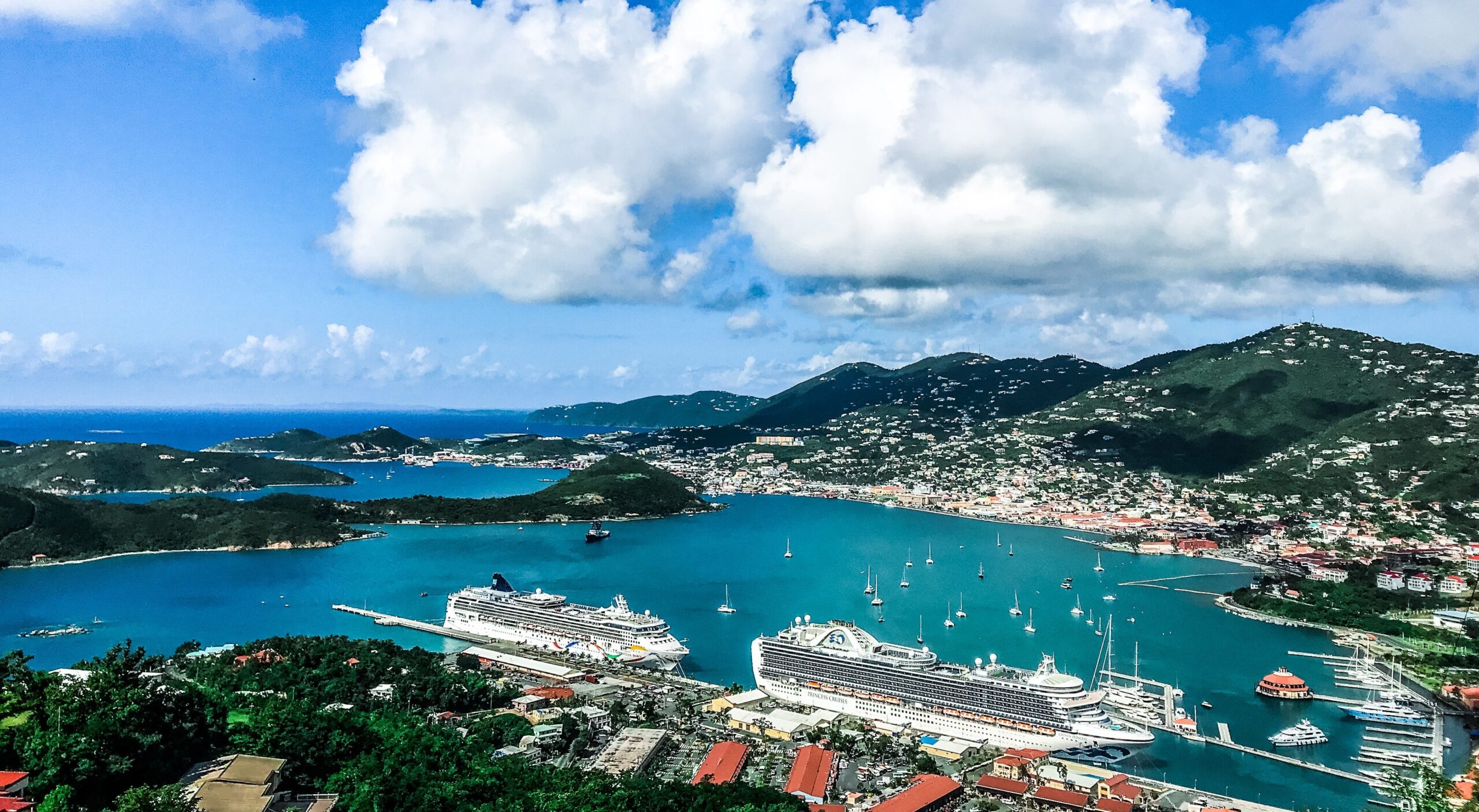Since March 2020, cruise arrivals in the U.S. Virgin Islands plummeted with adverse economic consequences for the local economy. From January to November 2020, cruise arrivals totaled 440,398 whereas for the same period in 2019, arrivals were 1.433 million, a 69 percent fall off. The reason for the drop was the suspension of cruising as a result of the COVID pandemic.
As COVID vaccines are being deployed in 2021, the V.I. should take the time to rethink its tourism development strategies and not just assume that hordes of cruise tourists will magically return once a critical mass of Americans have been vaccinated.
A critical assessment of what was occurring prior to the COVID crisis in the cruise ship segment, who was receiving the most benefits, why was the V.I. becoming less competitive vis-a-vis neighbors, what are the likely scenarios to emerge post COVID in the cruise industry, and what should the V.I. do to capture more benefits from tourism is necessary.
Who benefits?
The dominant open-water cruising model pre-COVID was based on deploying ever larger, more efficient megaships, such as Quantum and Oasis-class vessels with passenger capacities ranging from 4,200 to 5,400. These megaships are literally floating hotels akin to adult amusement parks, offering a dizzying variety of amenities and activities.
The large cruise lines reduce costs for guests through economies of scales based on large ship design and aggressive cost containment. For instance, Carnival Corporation, the world’s largest cruise company, in 2016 reported revenues of $16 billion and profits of $2.8 billion, for a profit rate of 17 percent. Carnival Corporation carried 11.5 million passengers with the per capita passenger paying $1,422, according to an article in Cruzley.com.
Further, the article noted that Royal Caribbean, the second largest cruise line, for example, in 2018 reported $1.8 billion in profits (19.1 percent profit rate) while carrying 6.1 million passengers with a per capita passenger revenue of $1,560.
The following features of the mass market cruise ship model listed below dramatically concentrate the benefits for the cruise operators to the detriment of other stakeholders.
Captive market pricing
Because of the all-inclusive model onboard, less money is being spent onshore. Most of the time on a cruise is spent at sea, and during this time, “upselling” the guests is common practice. Guests are plied with “data plans,” “liquor plans,” fine dining restaurants and luxury shopping options, and other premium services that all imply additional costs beyond the fare ticket.
Onshore excursions are even marketed wherein 30 percent to 50 percent of the cost off the total package is retained by the cruise operator. On average, between 24 percent to 28 percent of the total cruise ship revenue generated from a passenger comes from passenger onboard purchases, whereas 70 percent of the total revenue generated is from the ticket fare.
Low port taxes per passenger
The large cruise operators tend to dictate terms to port of call host communities and governments with regards to ship scheduling, berthing arrangements, port taxes and dockside servicing of the ship because the latter tend to be ports in low-income developing countries or overseas territories with limited bargaining power. If the receiving port authorities are not sufficiently accommodating to the demands of the cruise line, the company can simply threaten to drop the port of call. This occurred with Antigua and Barbuda several years back.
As of July 2019, the range of port taxes paid per passenger was quite low, according to published reports. The range for the Caribbean from highest to low was as follows: The Bahamas ($18), the British Virgin Islands ($18), Jamaica ($15), U.S. Virgin Islands ($14), Puerto Rico ($13.25), Belize ($7), St. Kitts and Nevis ($6), St. Lucia ($5), Grenada ($4.50) and Dominican Republic ($1.50.)
Labor cost containment
The cruise operators minimize costs by paying good salaries to a small number of skilled workers sourced from predominantly high-income, developed countries (captains, engineers, entertainers, chefs, medical and marketing staff) and low salaries to a mass of unskilled workers (chamber maids, waiters, food preparers, etc.) hailing from middle and low-income countries. Unskilled labor receives modest wages, ($16,000 to $19,000 per year) that while above income per capita standards in their home countries, are low by advanced country standards.
Lax environmental record
The cruise ship industry also has a high environmental footprint and has been slow to adopt higher sustainability standards. The four main environmental impacts are: Solid waste, liquid waste, carbon emissions and particulates.
Because of weak regulatory frameworks and limited enforcement capacity, cruise ships are rarely found in violation of environmental ordinances or maritime law by developing countries. It is only more advanced economies such as the U.S., West European states, Japan and Australia that have the willingness and wherewithal to monitor and police the cruise industry. For example, Carnival Corporation was heavily fined and placed on probation by U.S. authorities because of violations committed in U.S. waters.
The challenge
Given the analysis and the low expenditure of cruise ship visitors ($165 per head) in the U.S. Virgin Islands, does it make sense to continue to bet heavily on the mass-market cruise ship industry segment?
— Mark Wenner is an economist living on St. Thomas

